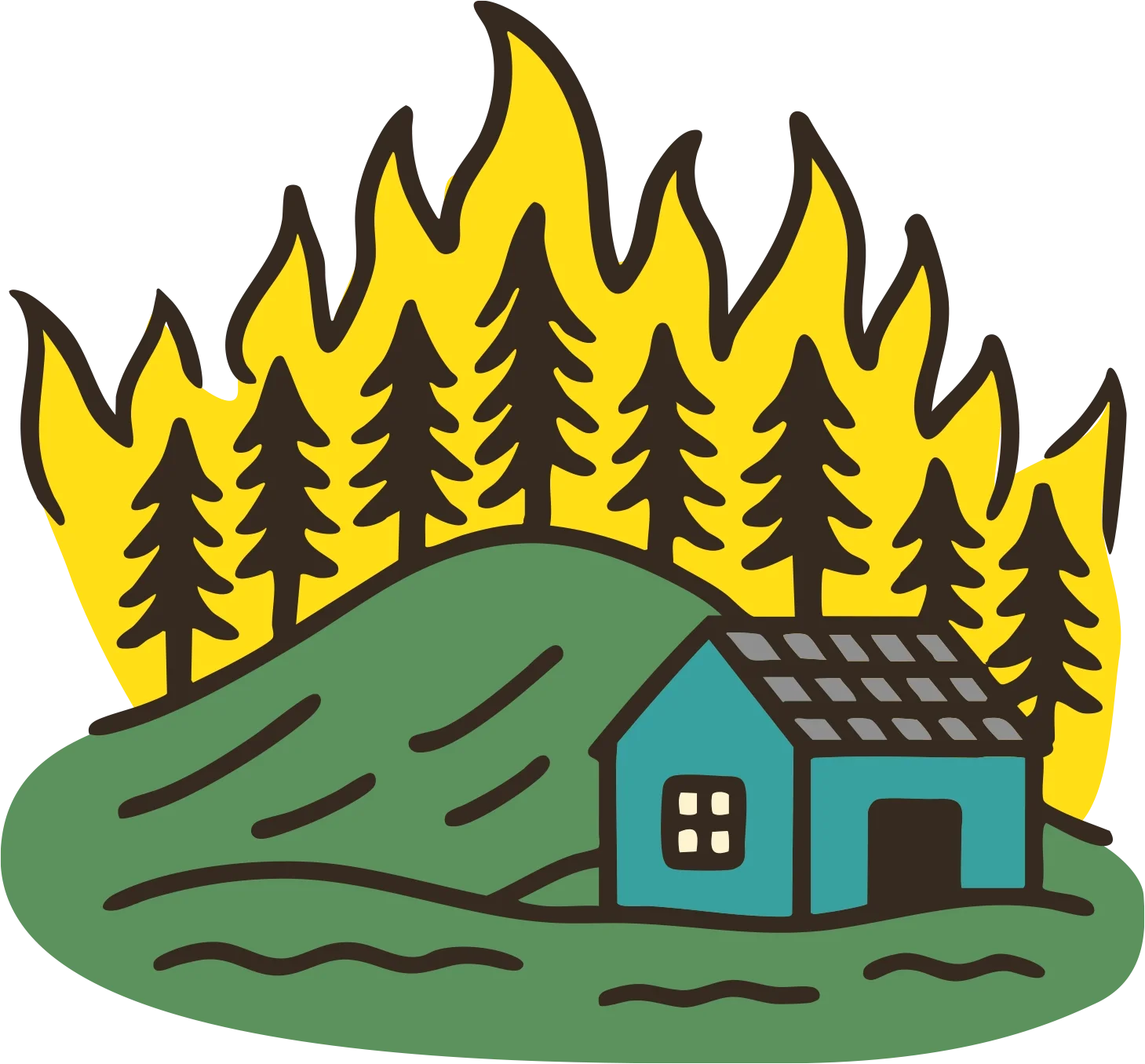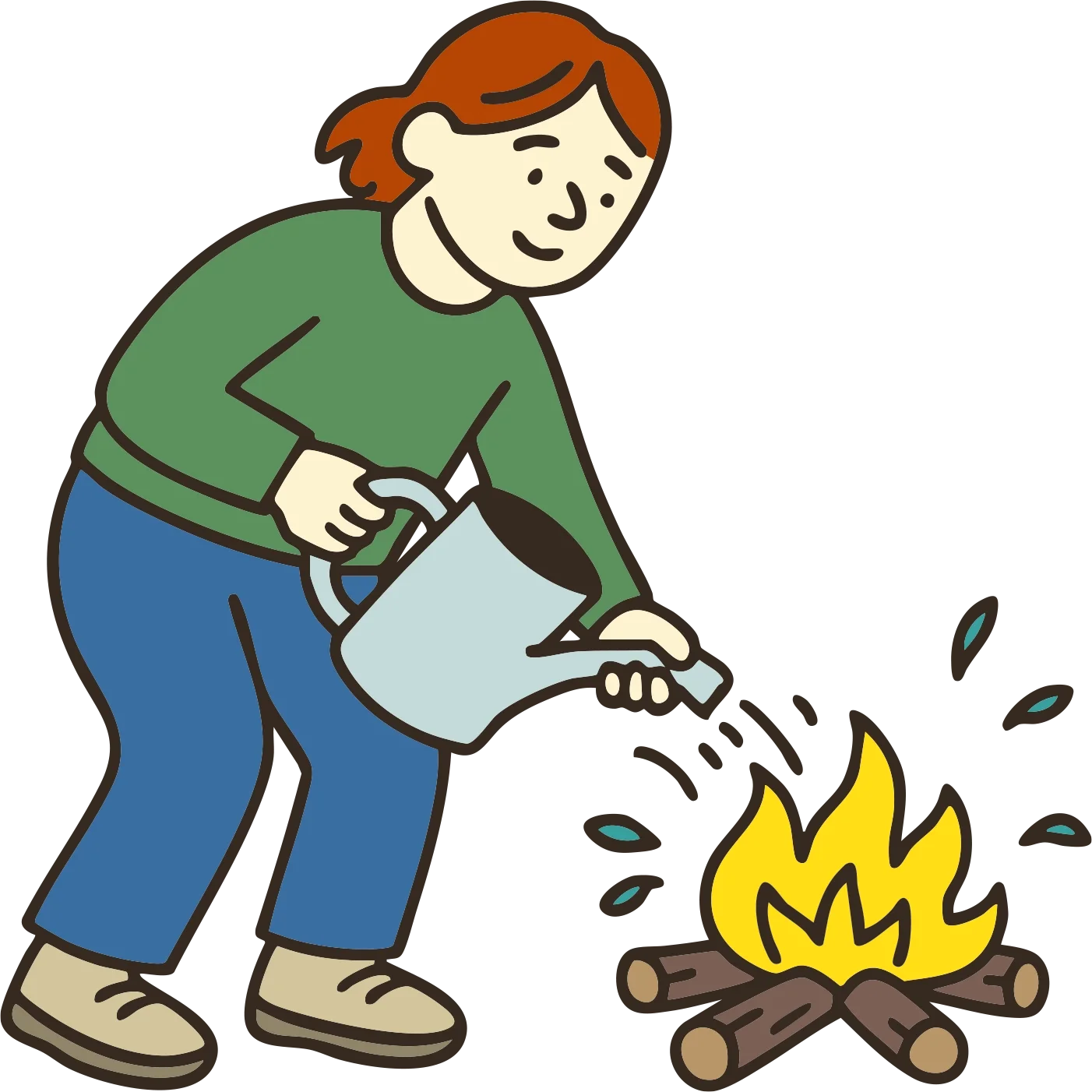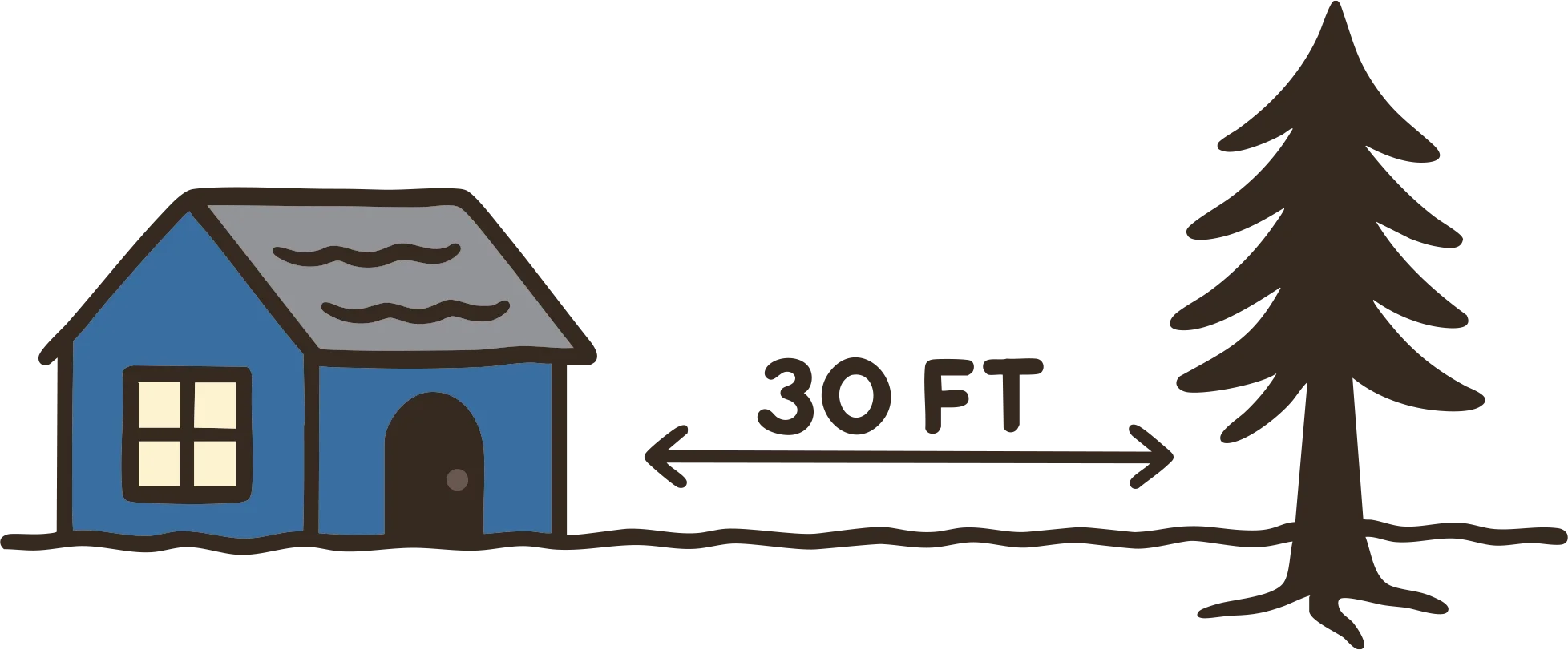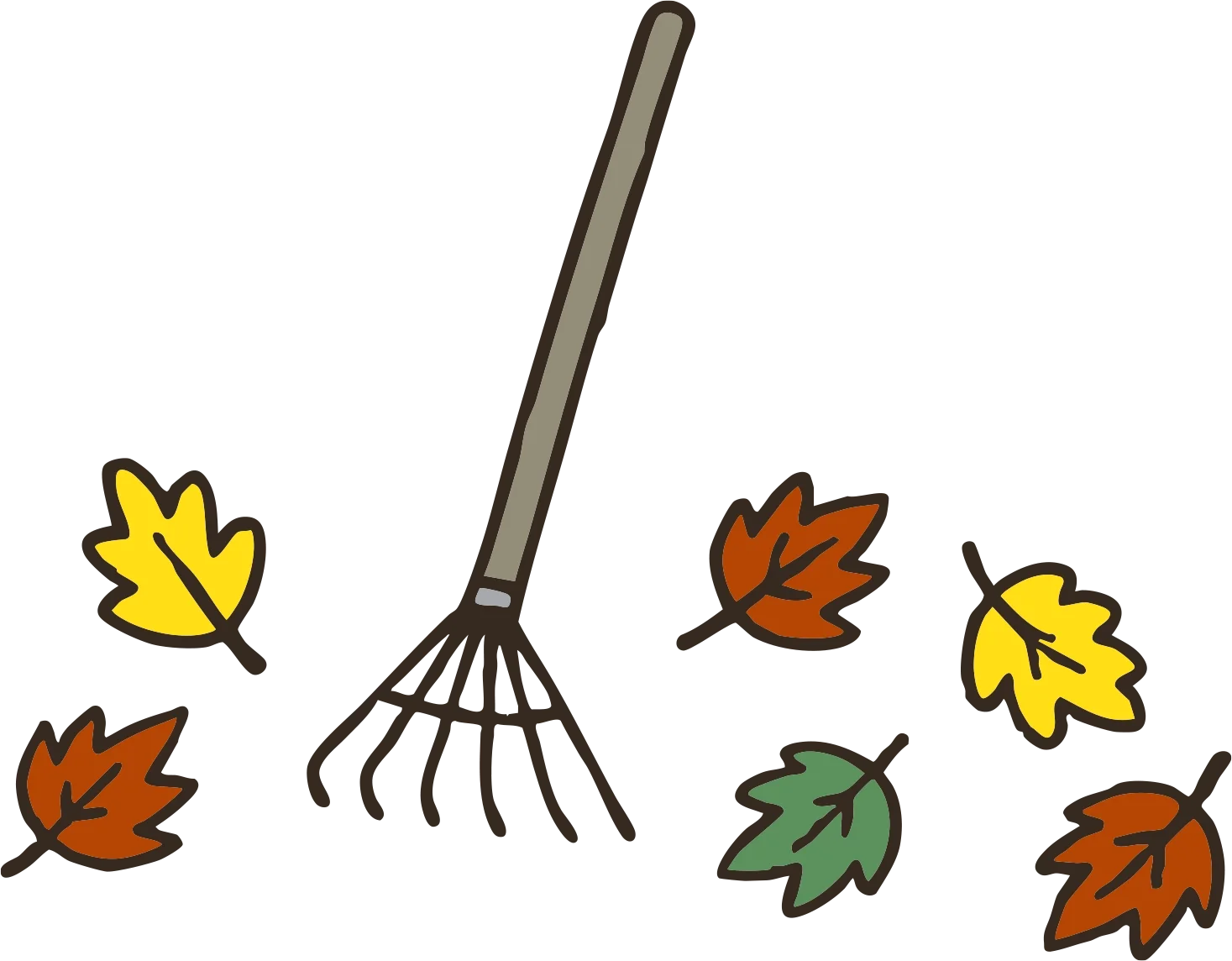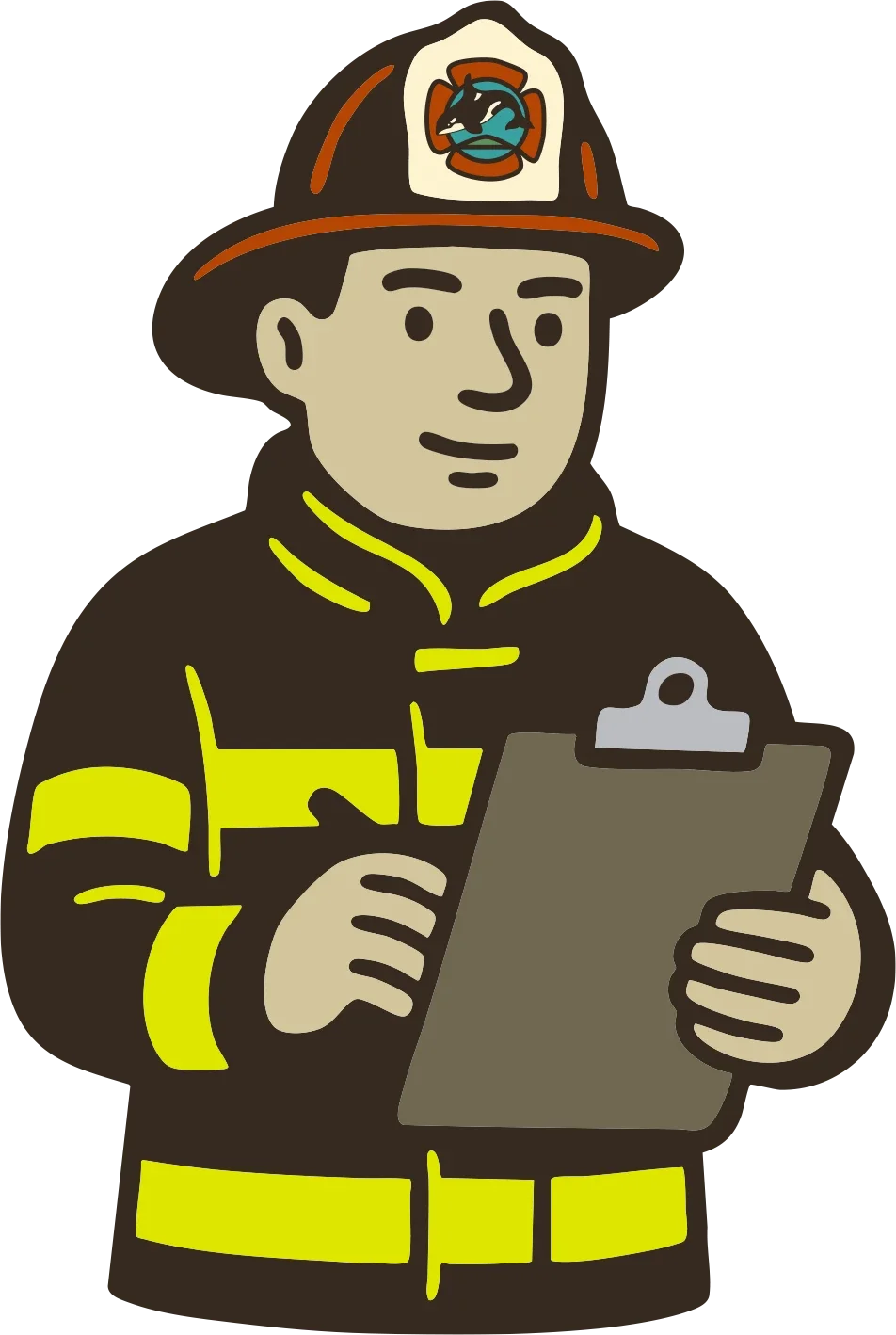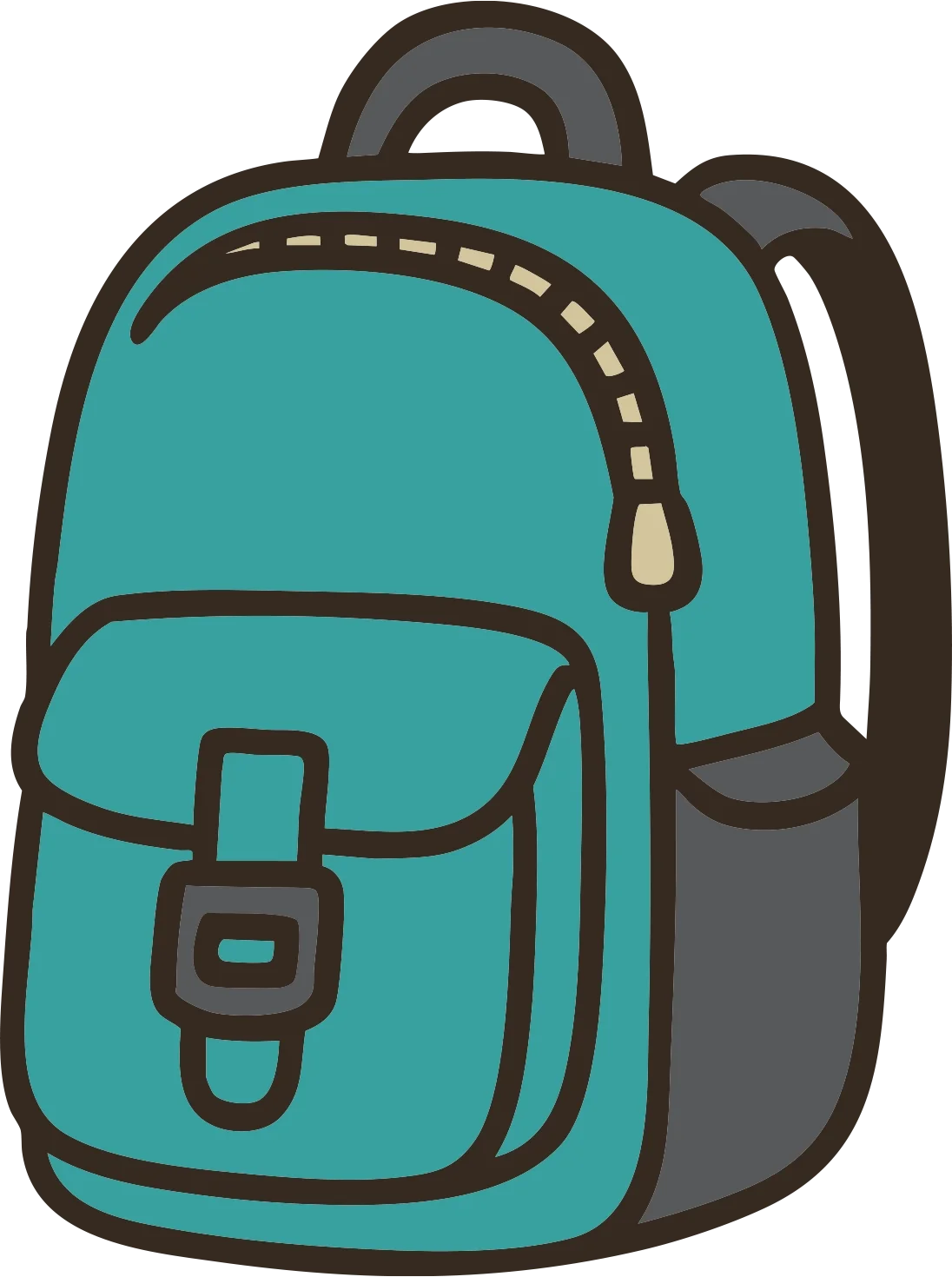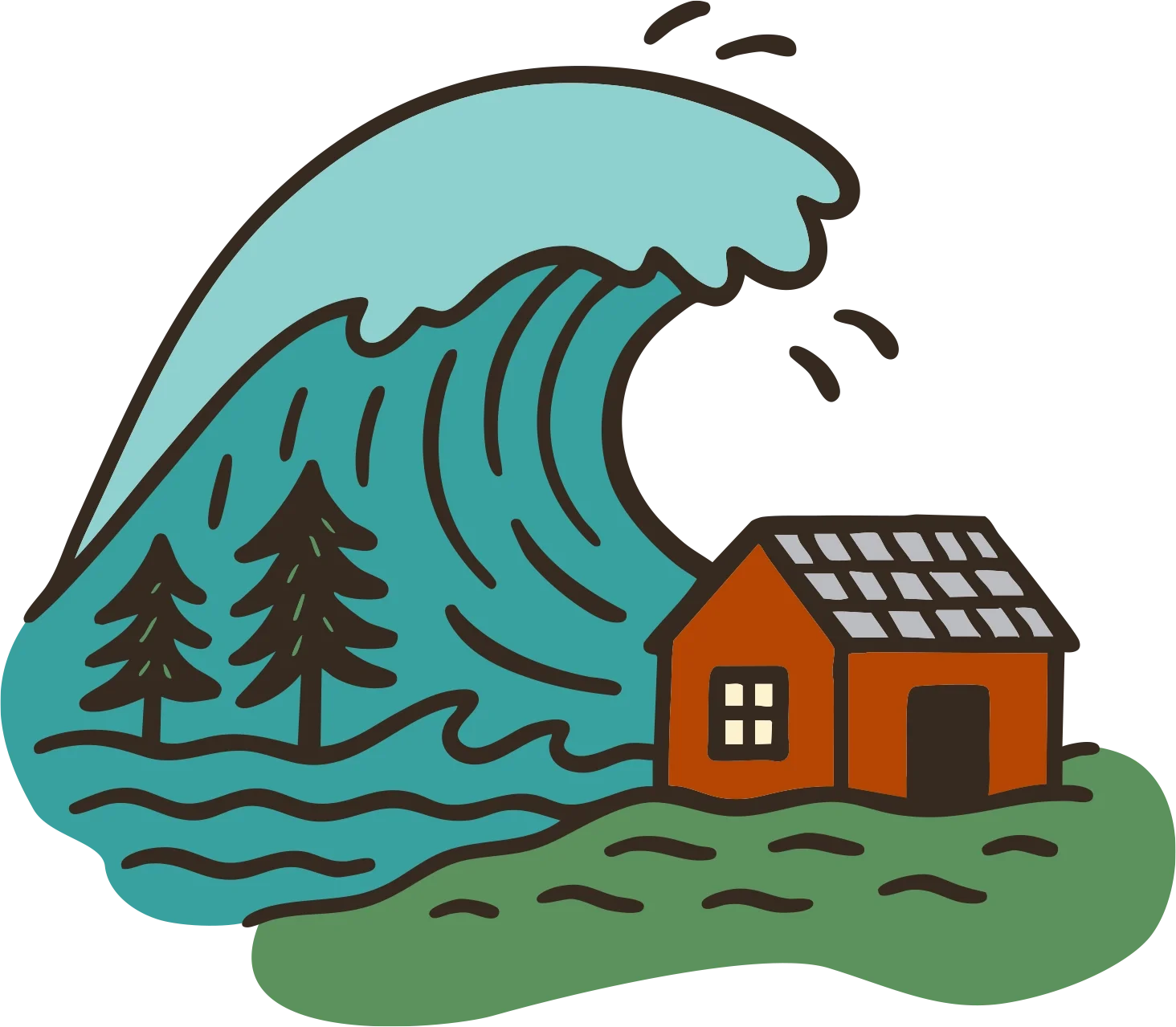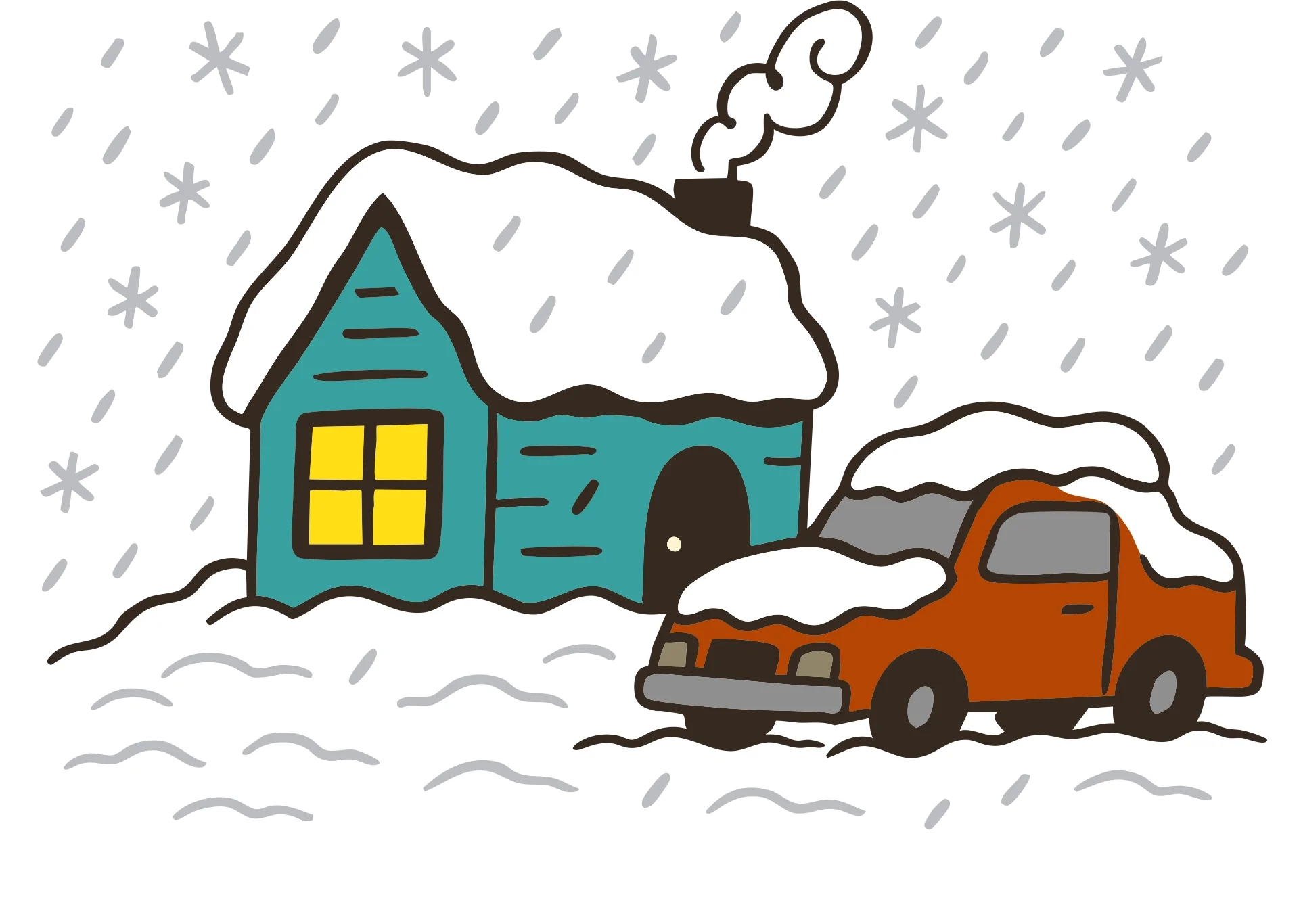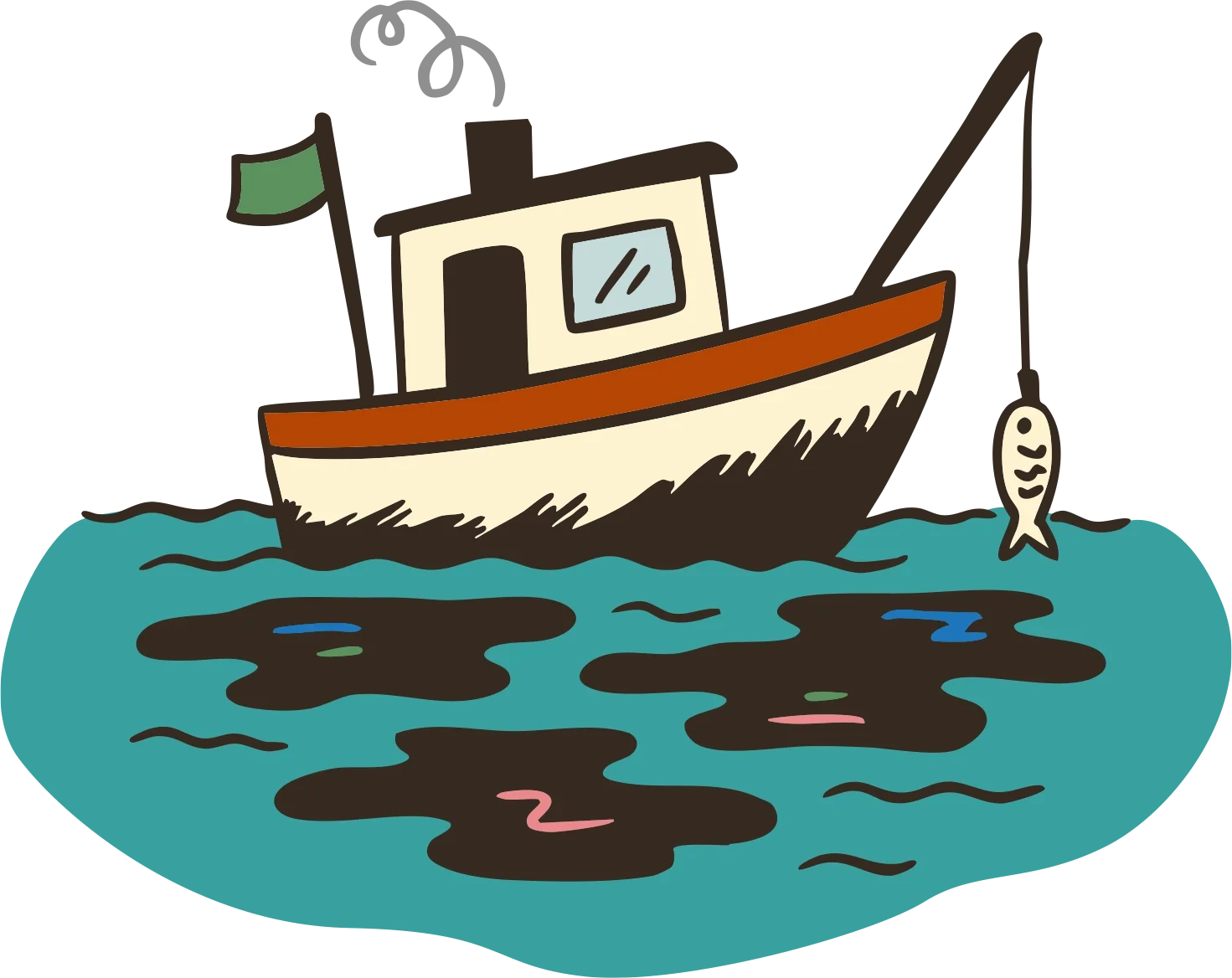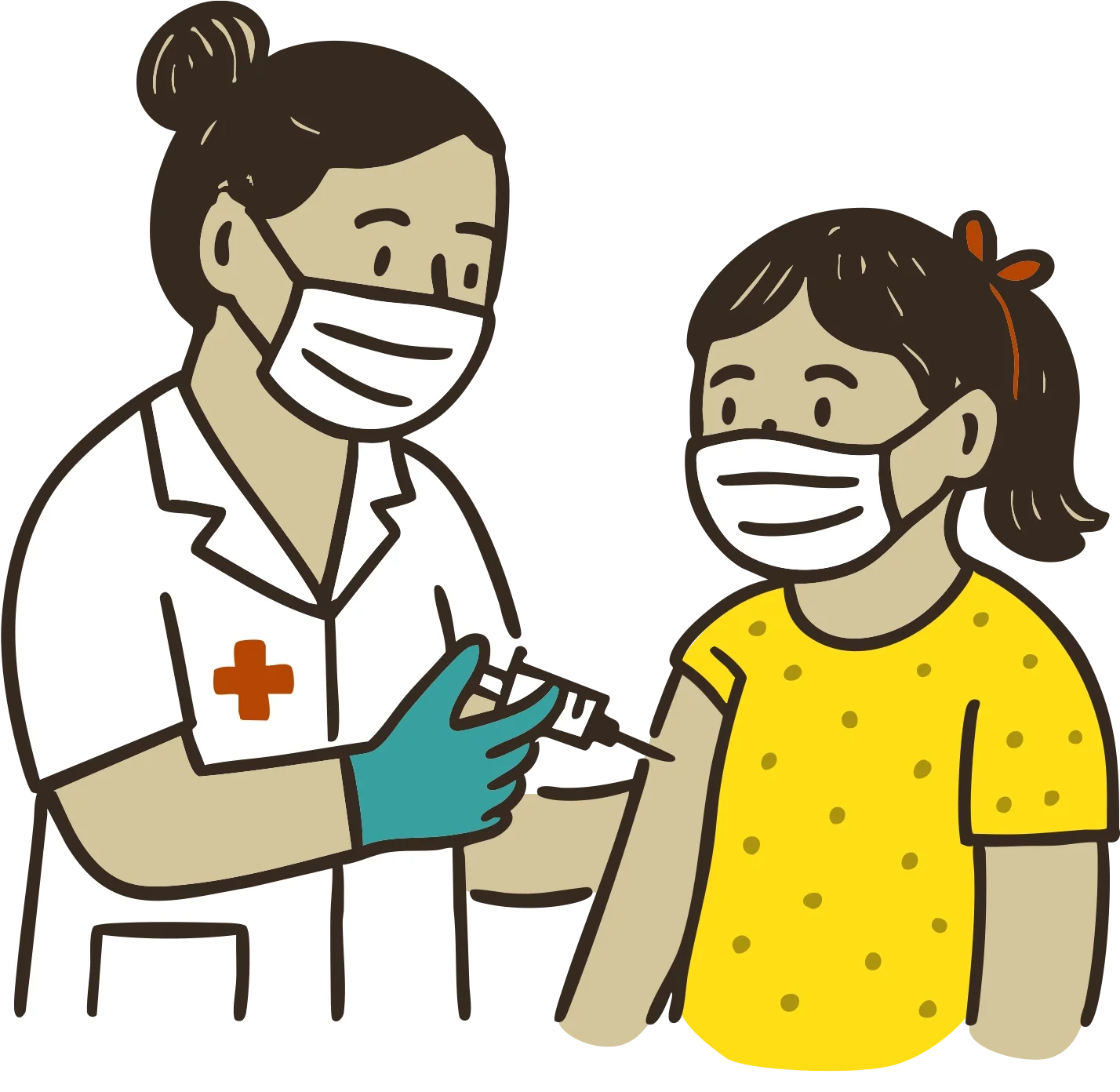Wildland Fire
Wildfire danger in the San Juan Islands is lower than in Eastern Washington and much of the West—but the risk is real. Many homes are surrounded by forest, grassy fields are often unmaintained, rainfall is limited in summer, and nearly all wildfires here are caused by people.
Even in low-risk years, one careless spark can do serious damage.
What Increases Fire Risk?
Is it Hot-Dry-Windy?
Homes surrounded by unmowed dry grasses and finer fuels
Poorly managed timberlands
Human activity—burn piles, fireworks, equipment use
For a general forecast, check the National Interagency Fire Center’s 7-Day Significant Fire Potential Map.
Most Fires Are Preventable
Nearly every wildfire in the islands starts with human negligence:
Unattended or poorly extinguished campfires
Brush pile burns during a burn ban
Fireworks
Sparks from mowers, chainsaws, or vehicles in dry grass
Be especially cautious during burn bans or high fire danger days. If you see smoke or an illegal fire, report it to San Juan County Dispatch at 360-378-4151.
Defend Your Home
Start by creating a defensible space around your house and outbuildings. Fire-resistant landscaping and regular maintenance can make the difference between damage and survival. Go to wildfireready.dnr.wa.gov and sign up for a free home inspection.
Before Fire Season:
Maintain a 30-foot buffer around your home
Clean gutters and roofs of dry leaves
Trim branches away from the roofline
Clear flammable vegetation under decks and near structures
Stack firewood at least 100 feet away and uphill from your house
Store flammable materials in safety containers
Screen attic and crawl space vents with fine mesh
Use noncombustible materials when building or replacing siding, roofing, and decking
Install and test smoke alarms
Keep basic fire tools (shovel, hose, rake, saw) handy
While Working Outdoors
Avoid sparks, hot metal, and metal-blade tools (that can spark when they hit a rock) in dry grass.
Don't park cars in tall grass
Extinguish cigarettes properly
Only burn when permitted—and stay with the fire until it’s cold
Keep a hose or water supply nearby during any outdoor work that could spark
Local Help is Available
Your local fire department and the San Juan Islands Conservation District may offer site visits to walk you through wildfire prep specific to your property. They can help you understand defensible space, safe landscaping, and evacuation planning.
Contact them directly, or sign up HERE —when they’re not responding to an emergency, they’re usually happy to help.
When Fire Threatens
If a fire is nearby or conditions escalate:
Get Ready:
Close windows, vents, and doors
Shut off propane or natural gas
Move flammable furniture away from windows
Place sprinklers on the roof if safe
Gather your go-bag and fire tools
Confine pets to one room or a travel crate
Stay Informed:
Monitor radio, scanner, or official channels
Don’t wait for an official evacuation order—use judgment
If it feels unsafe, leave early
If You Leave:
Back car into the driveway, leave keys in ignition
Leave doors unlocked and a note on the door with your destination
Wear protective clothing (sturdy shoes, long pants, long sleeves, gloves, mask or cloth)
Evacuation Tips
Take your disaster kit, ID, and important documents
Choose a route away from fire and smoke
Let someone know where you’re going and when you left
Lock your home
Island Risks
Disasters look different on the islands. Ferries stop running. Help may take days. These are the five scenarios most likely to affect us here. Each one has its own challenges—and its own game plan.
Learn what to expect and how to prepare.
Earthquakes &
Tsunamis
The islands sit near a major fault line. When the ground shakes, communications may go down and ferry service could be disrupted for weeks.
Winter Storms
High winds and heavy snow can knock out power, block roads, and isolate communities. Make sure your home—and your neighborhood—can ride it out.
Oil Spills
A spill in local waters could affect drinking water, beaches, wildlife, and air quality. Learn what to watch for and what to do if it happens.
Health Crisis
Pandemics, smoke events, and contaminated water supplies can all hit fast and spread wide. Know how to stay informed, reduce risk, and support each other.
Wildland Fires
Wildfire risk is growing every year. Evacuation routes are limited, and resources are spread thin. Preparation starts with your home—and your street.


